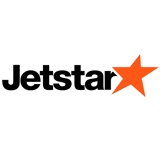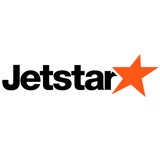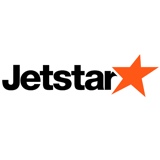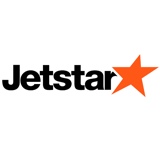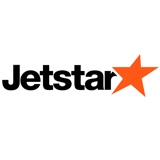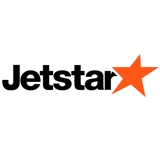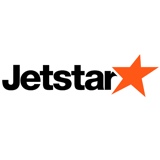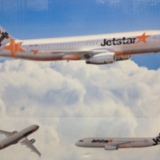Information
-
Audit Title
-
Document No.
-
Client / Site
-
Conducted on
-
Prepared by
-
Location
-
Personnel
Disclaimer
-
The auditor believe the information contained within this audit report to be correct at the time of printing. The auditors do not accept responsibility for any consequences arising from the use of the information herein. The report is based on matters which were observed or came to the attention of the auditor during the day of the audit and should not be relied upon as an exhaustive record of all possible risks or hazards that may exist or potential improvements that can be made.
Information on the latest workers compensation and OHS/WHS laws can be found at the relevant
State WorkCover/WorkSafe Authority or equivalent international regulatory body.
Jetstar Airways - Ground Operations
Confidentiality Statement
-
This audit activity is conducted by Jetstar Airways Ground Operations in accordance with the requirements stipulated in the Jetstar Airways Policy Manual (JAPM).
Actions resulting from audit assurance activity are treated as "Commercially in confidence" reports, summaries and corrective action management will be logged and tracked via StarSafe.
The content and elements contained here within updated to reflect Jetstar "Policy and Procedures" which change from time to time. Ownership and governance of this risk based assurance program is under taken by the "Head of Ground Operations" or their delegate.
1 Management and Control
-
ORM-$ 1.1.1 The provider shall have station management system that ensures :
-
1.1 Organization and Accountability
-
i) Policies,system,programs,process,procedures and/or plans of the provider are administered and/or implemented;
-
ii) All ground operations are supervised and controlled;
-
iii) Operations are conducted in accordance with applicable regulations and requirements of the customer airline(s). (GM)
-
ORM-$ 1.1.2 The provider shall designate and individual with the authority manage the station be responsible for :
-
i) Implementation of station management system;
-
Ensuring safety and security in station operations (GM)
-
-
Author Comments
-
Add media
1.2 Management and Commitment
-
ORM-$ 1.2.1 The provider shall have policy that commits the station organization to a culture that has a safety and security as fundamental operational priorities.(GM)
-
-
Author Comments
-
Add media
-
ORM-S 1.2.3 The Provider shall have an open reporting system that permits station personnel to report operational hazards and deficiencies to management. (GM)
-
-
Author Comments
-
Add media
-
Frontline operational personnel are often in the best position to observe and identify operational hazards and conditions that could lead to accidents or incidents. Experience has shown that personnel will not provide information if there is apprehension or fear that such reporting will result in disciplinary action.
-
The reporting policy is typically documented in operations manuals or other controlled documents that are accessible to and used by personnel at all stations. To be effective, an “open” policy would typically be non-punitive and assure employees that reporting unpremeditated or inadvertent errors would not necessarily result in disciplinary action being taken against the reporter or other individuals involved unless such errors result from illegal activity, willful misconduct or other egregious actions, as defined by the provider. Also, employees need to be assured that the identity (or information leading to the identity) of any employee who reports an error under this policy is never disclosed unless agreed to by the employee or required by law.
-
ORM-S 1.2.4 The Provider shall have a policy that commits the organization to ensuring the health and safety of personnel engaged in the conduct of station ground operations, and which takes into account and addresses:
-
i) Operational risk assessment; ii) Equipment design and maintenance; iii) Training and competence of personnel; iv) Continual improvement of processes and procedures. (GM)
-
-
Auditors Comments
-
Add media
-
Guidance may be found in the IATA Airport Handling Manual (AHM) 630
-
ORM-S 1.2.5 The Provider shall have a policy that commits the station organization to addressing environmental issues in all ground operations in accordance with applicable laws, regulations and other requirements. (GM)
-
-
Auditors Comments
-
Add media
-
Such policy focuses on compliance with station requirements typically associated with: • Material management; • Spillage; • Discharges and/or emissions; • Waste disposal. Materials specified above are typically those that would be used in day-to-day operations (e.g. oil, hydraulic and other fluids). Emissions typically emanate from vehicles and ground support equipment.
1.4 Communication
-
ORM-S 1.4.1 The Provider shall have a communication system that enables and ensures an exchange of information that is relevant to the conduct of ground operations, and ensures such exchange of information occurs throughout the station management system and in all station locations where ground operations are conducted. (GM)
-
ORM-S 1.4.2 The Provider shall have processes to ensure changes that affect operational responsibilities or performance are communicated as soon as feasible to applicable station management and front line personnel
-
-
Auditors Comments
-
Add media
1.4 Management Review
-
ORM-S 1.5.1 The Provider shall have a process to review the station management system at intervals not exceeding one year to ensure its continuing suitability, adequacy and effectiveness in the management and control of ground operations. A review shall include assessing opportunities for improvement and the need for changes to the system, including, but not limited to, organizational structure, reporting lines, authorities, responsibilities, policies, processes, procedures and the allocation of resources. (GM)
-
-
Auditors Comments
-
Add media
-
Management review is a necessary element of a well-managed company and provides a process through which organizational control and continuous improvement can be delivered. To be effective, a formal management review takes place on a regular basis, but typically not less than a minimum of once per year.
-
A review of the station management system would typically focus on ensuring station performance is consistent with the provider’s goals and objectives, and also include an assessment of opportunities for improvement and the need for changes at the station level.
-
An appropriate method to satisfy this requirement is a periodic formal meeting of the station management team. The agenda of the meeting includes a general assessment of the management system to ensure all defined elements are functioning effectively. The review also includes an assessment of operational performance to ensure the station management system is producing the desired operational safety, security and quality outcomes.
-
Station management ensures deficiencies identified during the management review are addressed through the implementation of organizational changes that will result in improvements to the performance of the system. Input to the management review process would include, but not be limited to:
-
1) Risk management issues 2) Safety and security issues 3) Quality assurance issues
-
4) Provision of resources 5) Operational feedback 6) Incident and near-miss reports
-
7) Changes in regulatory policy or civil aviation legislation 8) Changes in company and/or customer airline policies or requirements
-
9) Process performance and organizational conformity 10) Status of corrective and preventative actions
-
11) Follow-up actions from previous management reviews 12) Feedback and recommendations for management system improvement
-
13) Regulatory violations
-
Output from the management review process would include decisions and actions related to(:
-
1) Improvement of the effectiveness of processes throughout the station management system
-
2) Improvement of the management of risks
-
3) Ensuring the provision of resources necessary to satisfy operational safety, security and quality requirement
-
Management review is a formal process, which means documentation in the form of meeting schedules; agendas and minutes are produced and retained. Additionally, the output of the management review process would include action plans for changes to be implemented within the system where deemed appropriate.
1.6 Provision of resources
-
ORM-S 1.6.1 The Provider shall ensure the existence of the station facilities, workspace, equipment, supporting services, as well as work environment, necessary to satisfy operational safety and security requirements. (GM)
-
-
Auditors Comments
-
Add media
-
Station facilities, workspace, equipment and supporting services would typically include:
-
1) Buildings, workspaces and associated utilities
-
2) Facilities for people in the organization
-
3) Equipment appropriate for ground handling functions
-
4) Support equipment, including tools, hardware and software
-
5) Support services, including transportation and communication
-
Where infrastructure or equipment is under the responsibility of the airport authority, the provider would typically have a process to liaise with the owner to ensure the availability and serviceability of such infrastructure or equipment. A suitable work environment satisfies human and physical factors and considers:
-
1) Safety rules and guidance, including the use of protective equipment
-
2) Workplace location(s)
-
3) Workplace temperature, humidity, light, air flow
-
4) Cleanliness, noise and pollution
-
ORM-S 1.6.2 The Provider shall have a policy that ensures station positions that affect operational safety and security are filled by personnel that possess the knowledge, skills, training, and experience appropriate for the position. (GM)
-
-
Auditors Comments
-
Add media
-
For example, the position of station manager would typically have special prerequisite criteria an individual would have to meet in order to be considered for assignment to that position. Similarly, special prerequisite criteria are typically required for other positions that affect safety and security (e.g. front line supervisor, quality control manager).
-
Positions that require the implementation of security functions typically require completion of a background and criminal history check. A corporate personnel selection policy that applies to all operational areas of the company serves to satisfy this requirement at the station.
-
ORM-S 1.6.5 The Provider shall have a policy that addresses the use of psychoactive substances by operational station personnel, and ensures:
-
i) The exercise of duties while under the influence of psychoactive substances is prohibited; ii) Consequences for such behavior are defined. (GM)
-
-
Auditors Comments
-
Add media
-
Refer to the ITRM for the definition of Psychoactive Substances. DAMP Policy in Qantas Group
1.7 Risk Management
-
ORM-S 1.7.1 The Provider should have station risk management processes that ensure:
-
i) Hazards with the potential to affect operational safety or security are identified
-
ii) Threats with the potential to affect security are identified
-
iii) Hazards are analyzed to determine risks
-
iv) Risks are assessed to determine the need for control actions
-
v) Risk control actions are developed and implemented in station operations, and are subsequently monitored to ensure risks are controlled. (GM)
-
-
Auditors Comments
-
Add media
-
Guidance may be found in AHM 621.
-
ORM-S 1.7.2 The Provider should have processes for setting performance measures to validate the effectiveness of risk controls in station operations. (GM)
-
-
Auditors Comments
-
Refer to the ITRM for the definition of Performance Measure. A performance measure, which is a short- or long-term objective, typically identifies a target number or rate of occurrences in any operational area, and then tracks and compares the actual performance against the target rate or number over a period of time (usually one year
-
Creation of performance measures is typically an effective method for measuring operational performance to determine if desired outcomes are being achieved, and for focusing attention on the effectiveness of the organization in managing operational risks and maintaining compliance with relevant requirements.
-
In addressing the safety and security of operations, meaningful measures typically focus on lower level occurrences or conditions that are considered by the provider to be precursors to serious events. Performance measures may be specific to a certain area of operations, or may be broad and apply to the entire system.
1.8 Operational Planning
-
ORM-S 1.8.1 The Provider shall ensure the management system includes planning processes for ground operations that:
-
i) Define desired operational safety and security outcomes
-
ii) Address operational resource allocation requirements
-
iii) Take into account requirements originating from applicable external sources including, but not limited to, the customer airline(s), regulatory authorities and the airport authority. (GM)
-
-
Auditors Comments
-
Add media
-
Management system planning processes are necessary to ensure sufficient resources are in place to meet station operational safety and security requirements, as well as to meet requirements from external sources, such as regulatory authorities and equipment manufacturers. Resource requirements would typically be determined through risk assessment, management review or other management processes.
-
Planning processes may result in the generation of goals, objectives or other types of performance measures that would represent the operational outcomes a provider plans for and desires to achieve.
-
Planning processes are typically part of, or associated with, the budgetary process, which normally takes place prior to the start of the following calendar or fiscal year. Such process generally results in a plan for capital and operating expenditures to support operations.
2 Documentation and Records
2.1 Documentation System
-
ORM-S 2.1.1 The Provider shall have a process to ensure documentation and/or data used directly in the conduct or support of station ground operations is managed and controlled. (GM)
-
-
Auditors Comments
-
Add media
-
The primary purpose of document control is to ensure necessary, accurate and up-to-date documents are available to those personnel required to use them, to include personnel of external entities that conduct outsourced operational functions for the provider.
-
Examples of documents that are controlled include, but are not limited to, operations manuals, checklists, quality manuals, training manuals, training syllabi, process standards, policy manuals, and standard operating procedures.
-
An electronic system of document management and control is an acceptable means of conforming to the specifications in ORM-S 2.1.1. Within such a system, document files are typically created, maintained, identified, revised, distributed, accessed, presented, retained and/or deleted using computer systems (e.g. a web-based system). Some systems specify immediate obsolescence for any information or data that is downloaded or otherwise extracted (e.g. printed on paper) from the electronic files. ---Have a back up system/process
Operational Manuals
-
ORM-S 2.2.3 The Provider shall have processes to ensure the current version of required operational documentation is accessible in a usable format in all station locations where operations are conducted. Such required documentation shall include:
-
i) The Operations Manual (OM) of the customer airline(s);
-
ii) The IATA Dangerous Goods Regulations (DGR) and Addenda, if applicable, or equivalent documentation;
-
iii) The emergency response plan (ERP);
-
iv) As applicable to station operations, the Live Animal Regulations (LAR) and Perishable Cargo Regulations (PCR). (GM)
-
v) GHA own PPM (2.2.2)
-
vi) Ensure same for any outsource providers (2.2.4)
-
-
Auditors Comments
-
Add media
-
Refer to the ITRM for the definition of Operations Manual. A provider may not be required to maintain an OM for all customer airlines, or may be required to maintain only part of the manual for certain customer airlines. Based on customer airline requirements and the types of ground operations conducted at a specific location, only relevant parts of applicable manuals may be necessary.
-
Availability of only the provider’s manual may be sufficient when such manual is accepted by the customer airline(s) or when a customer airline does not provide a manual. A current edition of the DGR would include any Addenda that are applicable. Equivalent documentation would contain information derived from the DGR that is relevant only to the specific ground handling functions conducted at any particular location. Also, the ICAO Technical Instructions for the Transport of Dangerous Goods would be considered equivalent documentation. Applicability of dangerous goods requirements to ground operational functions is defined in DGR Section 1, Table 1.5.A. Guidance with respect to ERP requirements may be found in AHM 620.
2.3 Records System
-
ORM-S 2.3.1 The Provider shall have a system for the management and control of station operational records to ensure the content and retention of such records is in accordance with applicable regulations and requirements of the customer airline(s), and to ensure operational records are subjected to standardized processes for:
-
i) Identification;
-
ii) Legibility;
-
iii) Maintenance;
-
iv) Retrieval;
-
v) Protection and security;
-
vi) Disposal, deletion (electronic records) and archiving. (GM)
-
-
Auditors Comments
-
Add media
-
Such process would typically address all records associated with ground operations at the station, including personnel training records and any other records that document the fulfillment of operational requirements (e.g., GSE maintenance, weigh bridge calibration).
3 Safety and Quality Management
3.3 Safety Program
-
ORM-S 3.3.1 The Provider shall have a station safety program for the purpose of preventing accidents and incidents, which includes processes for:
-
i) Personnel to report operational hazards, deficiencies and areas of concern;
-
ii) The investigation and reporting of accidents and incidents;
-
iii) The investigation of irregularities or other non-routine operational occurrences that may be precursors of accidents or incidents;
-
iv) The identification and analysis of operational hazards and potentially hazardous conditions;
-
v) The production of analytical information, which could include recommendations, for use by operations managers in the prevention of operational accidents and incidents;
-
vi) Ensuring significant issues arising from the station safety program are subject to regular review by station management; (3,3.3)
-
The dissemination of safety information to appropriate station management and operational personnel. (GM)
-
Designated Manage/Individual to manage safety program (3.3.2).
-
-
Auditors Comments
-
Add media
-
The safety program is a critical element of risk management. Documentation of the program typically includes a description of the structure, individual responsibilities, available resources and core processes associated with the program. A station safety program would also be in accordance with applicable regulations and requirements of the customer airline(s). Guidance may be found in AHM 600.
-
ORM-S 3.3.7 The Provider shall have a station operational reporting system that:
-
i) Encourages and facilitates feedback from personnel to identify deficiencies, expose hazards and raise concerns over issues that have the potential to threaten the safety or security of aircraft, passengers, personnel, facilities, systems or equipment;
-
ii) Includes analysis and management action to address operational deficiencies, hazards and concerns identified through the reporting system
-
iii) Is in accordance with applicable regulations and requirements of the customer airline(s). (GM)
-
-
Auditors Comments
-
Add media
-
ORM-S 3.3.8 The Provider shall have a process in accordance with requirements of the customer airline(s) for the conduct of station airside accident and incident investigations, and for ensuring, in the event such an investigation:
-
i) The customer airline(s) and relevant authorities are notified of the accident or incident;
-
ii) Factual information associated with the investigation is accurately recorded in a standardized report format;
-
iii) Investigations are conducted with the intent of identification of root cause(s) for the prevention of reccurrence.
-
iv) Actions raised following the completion of investigations address any identified root cause(s)
-
v) Investigation reports are retained and submitted in accordance with applicable regulations and requirements of the customer airline(s).
-
vi) Persons conducting such investigations have completed relevant and sufficient training (GM)
-
-
Auditors Comments
-
Add media
-
The station process for airside safety investigation would typically be an element of the station safety program as specified in ORM-$ 3.3.1. Guidance may be found in AHM 650 and 652.
3.5 Quality Control Program
-
ORM-S 3.5.1 The Provider shall have a station quality control program that provides for scheduled and unscheduled inspections and/or evaluations of ground operations at the station for the purpose of:
-
i) Ensuring compliance with standards of the Provider, applicable regulations and requirements of the customer airline(s);
-
ii) Identifying operational hazards for the application of risk assessment and control. (GM)
-
iii) Designated person with authority to manage, develop, implement and maintain this program. (3.5.2)
-
iv) The Provider shall have processes for addressing findings that result from inspections and/or evaluations conducted under the station quality control program (3.5.3)
-
v) Findings & issues be subject to regular review by station management (and above) (3.5.4)
-
vi) Process for dissemination of information. In line with communication? (3.5.5)
-
vii) Control of outsource functions (incl GSE) (3.6.1) Contracts and/or Service Level Agreements in place.
-
viii) Audits & service reviews of outsourced suppliers (3.6.2/3)
-
-
Auditors Comments
-
Add media
-
Station quality control would typically complement and operate in conjunction with the provider’s quality assurance program. Under such program, operational self-inspections are typically conducted on a regular basis for the purpose of measuring compliance with safety standards and procedures, preventing unsafe work practices, and identifying hazardous conditions that increase the risk of accidents and incidents. Guidance may be found in AHM 612, as well as the Airports Council International Airside Safety Handbook (ACI) 1.5.0 and 3.1.0.
-
Guidance may be found in AHM 612, as well as the Airports Council International Airside Safety Handbook (ACI) 1.5.0 and 3.1.0. Typically, the individual responsible for the station quality assurance program manager is part of or has direct lines of communication with management at the station to ensure safety and security issues are appropriately addressed. Maintenance of GSE would be considered a function associated with operational safety.
-
A contract or agreement is necessary to ensure the outsourced services and/or functions are formally documented. Inclusion of measurable specifications, usually in the form of a service level agreement, would provide the basis for a monitoring process.
3.7 Product Quality Control
-
ORM-S 3.7.1 The Provider should have processes that ensure equipment or other operational products that are purchased or otherwise acquired from an external vendor or supplier meet the technical requirements of the Provider and the customer airline(s) prior to being used in the conduct of ground operations at the station. (GM)
-
-
Auditors Comments
-
Add media
-
This provision applies only to products (not services) that are purchased or otherwise acquired from an external supplier or vendor. Following are some examples of equipment or products that could have a negative effect on the safety or security of operations if put into service with substandard quality (i.e., the provider’s technical standards are not met):
-
1) Ground support equipments
-
2) Operational software, databases;
-
3) Security screening equipment;
-
4) Aircraft chicks.
-
The process may include an evaluation of suppliers, with the selection of suppliers based on their ability to supply products in accordance with the provider’s requirements and technical specifications. Implementation of a rigorous receiving inspection process (or equivalent activity) would also provide a means of verifying that operationally critical products meet specified technical requirements prior to such products being put into service.
4 Event Response
4.1 Emergency Response Plan
-
ORM-S 4.1.1 The Provider shall have a station emergency response plan (ERP) for the management and coordination of activities associated with the response to a major accident, incident, crisis or other disastrous occurrence. Such plan shall be in accordance with:
-
i) The Provider’s ERP;
-
ii) The airport ERP, if applicable;
-
iii) Requirements of each customer airline.
-
iv) Designated qualified Individual to develop & manage the plan (4.1.2)
-
v) Procedures & assigned responsibility to appropriately trained persons (4.1.3/4)
-
-
Auditors Comments
-
Add media
-
Refer to the ITRM for the definitions of Emergency Management and Emergency Response. An ERP would be designed to address events that could result in fatalities, serious injuries, considerable damage or major disruptions to operations. The plan would typically be based on an assessment of risk appropriate to the size and type of ground operations conducted at each location.
-
In some locations, a governmental, airport and/or other relevant authority assume emergency or crisis response. In such case, the ERP of a provider would normally focus on and address the scope of interaction with and/or participation in the response implemented by the authority. Likewise, where there is a common ERP that has been developed jointly by the airport authority and customer airlines, a provider might either use the ERP of the customer airline(s) or have its own ERP that is the same as that of the customer airline(s). In such case, a provider would typically ensure the responsibilities and duties assigned to its personnel satisfy all requirements of the plan.
-
Of particular importance, an ERP would have to ensure an appropriate level of coordination and communication is established and maintained with customer airlines during an emergency response situation
-
An ERP includes industry best practices and ensures community expectations are addressed. Additionally, an ERP typically:
-
1) Specifies general conditions for implementation;
-
2) Provides a framework for an orderly implementation;
-
3) Ensures proper coordination with external entities at all potential locations;
-
4) Addresses all potential aspects of an event;
-
5) Ensures regulatory requirements associated with specific events are satisfied;
-
6) Provides a scenario for the transition back to normal operations;
-
7) Ensures regular practice exercises as a means to achieve continuous improvement.
4.2 Other Event Response
-
ORM-S 4.2.1 The Provider shall have procedures in accordance with requirements of the customer airline(s) for responding to emergencies that require the evacuation of an aircraft during the conduct of station ground operations. (GM)
-
-
Auditors Comments
-
Add media
-
A provider typically uses the procedures of the customer airline(s), but might have its own procedures that meet the requirements of the customer airline(s).
-
Typically, procedures would address an aircraft evacuation due to:
-
1) Fuel spill;
-
2) Aircraft fire;
-
3) Dangerous good incident.
-
Guidance may be found in AHM 633 and ACI 2.14.
-
ORM-S 4.2.2 The Provider shall have procedures in accordance with applicable regulations and requirements of the customer airline(s) for reporting dangerous goods accidents or incidents that occur during station ground operations. (GM)
-
-
Auditors Comments
-
Add media
-
A provider typically uses the procedures of the customer airline(s), but might have its own procedures that meet the requirements of the customer airline(s). Guidance may be found in the DGR, Section 9.
5 Training and Qualification
5.1 Functional Training Program
-
ORM-S 5.1.1 The Provider shall have a process to ensure station personnel with duties and/or responsibilities in ground handling operations complete initial and recurrent training as applicable to their individually assigned operational function(s) at the station, Such training shall be in accordance with the Provider’s general training program and function-specific training programs as applicable, to include the:
-
i) All Passenger Service Handling training as required by OM15
-
ii) All Ramp, Baggage Service & Push/Towing training as required by OM15
-
iii) Dangerous Goods & Security Awareness.
-
iv) Any relevant Jetstar Training pack relevant to task as documented.
-
v) Cargo and mail handling training program as required by OM16. (GM)
-
vi) Jetstar Load Supervision (Lead Hand) (5.1.3)
-
vii) Training provided to outsource suppliers (5.1.2)
-
-
Auditors Comments
-
Add media
-
Refer to the ITRM for the definitions of Training and Training Course. The specification for initial and recurrent training applies to all personnel who perform duties within the scope of ground operations.
5.2 Security Training Program
-
ORM-S 5.2.1 The Provider shall have a process to ensure station personnel complete initial and recurrent security training as applicable to individually assigned operational functions at the station, and such training is in accordance with the Provider’s security training program and the Security Program of the customer airline(s). Same training provided to outsource suppliers/contractors. (5.2.2)
-
---Security Provision is audited by Qantas Security & not covered here---
-
-
Auditors Comments
-
Add media
5.3 Dangerous Goods Training Program
-
ORM-S 5.3.1 The Provider shall have a process to ensure station personnel with duties and/or responsibilities in operational ground handling functions complete initial and recurrent dangerous goods training as applicable to individually assigned operational functions at the station. Such training shall be in accordance with the Provider’s dangerous goods training program and requirements of the customer airline(s). (GM)
-
Training provided to outsource providers/contractors? (5.3.4)
-
-
Auditors Comments
-
Add media
-
Training specification according to operational function may be found in DGR 1.5.
5.4 Airside Safety Training Program
-
ORM-S 5.4.1 The Provider shall have a process to ensure station personnel with duties that require access to airside areas complete initial and recurrent training in accordance with the Provider’s airside safety training program. (GM)
-
-
Auditors Comments
-
Add media
-
Refer to the ITRM for the definitions of Airside and Airside Safety Training. Guidance for Airside Safety Training is found in AHM 611 and 640.
5.5 Airside Driver Training Program
-
ORM-S 5.5.1 The Provider shall have a process to ensure station personnel with duties that require the operation of vehicles and/or equipment in airside areas complete training and qualification, and, if applicable, obtain an operating license, in accordance with the Provider’s airside driver training program. (GM)
-
-
Auditors Comments
-
Add media
-
Guidance may be found in AHM 611.
5.6 GSE Operations Training program
-
ORM-S 5.6.1 The Provider shall have a process to ensure station personnel with duties that require the operation of GSE complete training and qualification in accordance with the Provider’s GSE operations training program. (GM)
-
-
Auditors Comments
-
Add media
-
Refer to the ITRM for the definition of Ground Support Equipment (GSE). Guidance may be found in AHM 630.
5.13 Aircraft Turnaround Coordinator Training Program
-
ORM-S 5.13.1 If the Provider delivers aircraft turnaround coordination services at the station, the Provider shall have a process to ensure personnel with duties and/or responsibilities that include aircraft turnaround coordination complete initial and recurrent training in accordance with the Provider’s aircraft turnaround coordinator training program. (GM)
-
-
Auditors Comments
-
Add media
-
Refer to the ITRM for the definition of Aircraft Turnaround Coordination. Guidance may be found in AHM 615.
6 Security Management
6.1 Security Controls
-
ORM-S 6.1.1 The Provider shall have procedures that ensure station security controls are implemented in accordance with:
-
i) The Provider’s security program;
-
ii) Security Programs of the customer airline(s) served at the station;
-
iii) If applicable, requirements of the civil aviation security program of state where the station is located. (GM)
-
ORM-S 6.1.2 The Provider shall have a process to ensure security controls are in place to prevent personnel and vehicles from unauthorized access into station facilities and areas where the Provider conducts ground operations for customer airlines. (GM)
-
ORM-S 6.1.3 The Provider shall have procedures that ensure ground handling personnel performing functions in station airside areas are required to maintain awareness for unauthorized interference, and to request a verification of identity from any potentially unauthorized persons. (GM)
-
-
Auditors Comments
-
Add media
-
Refer to the ITRM for the definitions of Security Controls and Security Program.
-
Security controls are typically implemented by an authority (e.g. government or airport authority), but under certain conditions it might be necessary for implementation to be accomplished by the provider or other entity deemed competent by the provider and/or customer airline.
6.3 Contingency Planning
-
ORM-S 6.3.1 The Provider shall have a station contingency plan in accordance with the Security Program of the customer airline(s) for responding to aviation security incidents
-
-
Auditors Comments
-
Add media
-
ORM-S 6.3.2 The Provider shall have procedures in accordance with the Security Program of the customer airline(s) that ensure notification of the relevant civil aviation security authorities when unlawful interference against a customer airline has occurred at the station.
-
-
Auditors Comments
-
Add media
7 Ground Support Equipment (GSE) Management
7.1 GSE Functional Specifications
-
ORM-S 7.1.1 If the Provider operates GSE at the station, the Provider shall have functional specifications that govern the use of GSE in station ground handling operations. Such specifications shall state the GSE requirements applicable to the type(s) of ground handling functions performed at the station. (GM)
-
-
Auditors Comments
-
Add media
-
Functional specifications demonstrate that a provider has evaluated the various types of ground handling functions performed at the station and, based on such evaluation, has developed requirements that ensure each function is performed using equipment that is deemed appropriate for the purpose.
7.2 GSE Maintenance
-
ORM-S 7.2.1 If the Provider maintains GSE at the station, the Provider shall have a program to ensure such equipment is maintained in accordance with the Provider’s GSE maintenance program. (GM)
-
Records maintenance should be in line with document maintenance.
-
-
Auditors Comments
-
Add media
-
Refer to the ITRM for the definition of Ground Support Equipment (GSE). GSE is typically maintained in accordance with the respective manufacturer’s recommendations.
7.2 GSE Operation
-
ORM-S 7.3.1 If the Provider operates GSE at the station, the Provider shall have procedures for the operation of each type of GSE utilized in station ground operations to ensure such equipment is operated in accordance with the Provider’s GSE operation program.
-
-
Auditors Comments
-
Add media
-
Guidance may be found in AHM 630
-
ORM-S 7.3.2 If the Provider operates GSE at the station The Provider shall have procedures that ensure GSE is subjected to a pre-movement inspection prior to being utilized in operations. (GM)
-
All GSE is operated and handled in line with Jetstar OM15 including tag out procedures if unserviceable.
-
-
Auditors Comments
-
Add media
-
Such inspection, typically referred to as a “walk-around check,” would be conducted prior to movement of the equipment in order to ensure:
-
1) Visible damage or abnormality is detected;
-
2) Any cables or hoses are stowed;
-
3) If the equipment is carrying a load, all locks, stops, rails or straps are fastened and are securing the load.
-
Specifically, a “pre-use” inspection might focus on: Guidance may be found in AHM 630.
8 Unit Load Device (ULD) Management
8.1 ULD Airworthiness and Serviceability
-
ORM-S 8.1.1 If the Provider handles ULDs at the station, the Provider shall have procedures in accordance with requirements of the customer airline(s) to ensure ULDs are inspected to identify damage, and to determine airworthiness and serviceability:
-
Tagging, handling, loading & storage of ULD is done as per OM15.
-
-
Auditors Comments
-
Add media
-
Refer OM15 for ULD requirements.
9.2 Supervision
-
ORM-S 9.2.1 If an Airside Safety Committee has been established at the station, the Provider shall have a process to ensure participation in the deliberations of the Committee, and such participation shall be in accordance with requirements of the customer airline(s) and in a manner consistent with the Terms of Reference of the Committee. (GM)
-
-
Auditors Comments
-
Add media
-
An Airside Safety Committee or equivalent body offers a means of interfacing with the various entities that operate in airside areas at the airport. Typically, Committee meetings would be held on a periodic basis to involve all relevant entities in discussions that involve, among other issues, the safety and security of airside operations at the airport. Guidance may be found in ACI 3.7.0.2, Training and Qualification.
9.3 Airside Fire Safety
-
ORM-S 9.3.1 The Provider shall have procedures for fire protection and prevention in ground operations conducted in station airside areas, which address:
-
i) Identification and elimination of conditions that could lead to a fire;
-
ii) Availability, access and use of fire fighting equipment;
-
iii) Emergency procedures, including alerting personnel on board the aircraft;
-
Procedures for controlling and reporting fires. (GM)
-
-
Auditors Comments
-
Add media
-
Guidance may be found in AHM 630 and ACI 2.16.0
9 .4 Airside Cleanliness
-
-
Auditors Comments
-
Add media
-
Procedures would typically focus on the avoidance of and response to fluid spillage in station airside operations, to include containment, reporting and cleanup, in accordance with the requirements of relevant authorities. Other procedures might address spillage of:
-
Toilet waste;
-
Water (particularly in freezing conditions) and ice cubes;
-
Oil and hydraulic fluid;
-
Hazardous materials and other chemicals
-
ORM-S 9.4.2 The Provider shall have a FOD prevention program for implementation in station airside areas where the Provider conducts aircraft handling or aircraft ground movement operations for customer airlines. (GM)
-
-
Auditors Comments
-
Add media
-
Refer to the ITRM for the definition of FOD (Foreign Object Damage). The objective of a FOD prevention program is the elimination of conditions that could cause damage to an aircraft. Guidance may be found in AHM 635.
9.5 Airside Severe Weather Plan
-
ORM-S 9.5.1 The Provider shall have a station severe weather operations plan that provides for the protection for aircraft, passengers, operational personnel, baggage, cargo and equipment when severe weather conditions are a threat to operations. (GM)
-
-
Auditors Comments
-
Add media
-
Refer to the Glossary in this manual for the definition of Severe Weather Operations Plan.
-
A typical plan includes practices for preparation and encountering severe weather conditions in operations, and would address, as appropriate to the climatic conditions of a station:
-
1) High Winds;
-
2) Lightning
-
3) Low Visibility
-
4) Ground icing.
-
Guidance may be found in AHM 630.
9.6 Passenger Safety
-
ORM-S 9.6.1 If the Provider conducts ground operations at the station that utilize the ramp surface for passenger embarkation and disembarkation, the Provider shall have procedures or other measures that provide for the protection of passengers moving between the aircraft and a terminal building or ground transportation vehicle. (GM)
-
-
Auditors Comments
-
Add media
-
To preclude injuries, passenger movement on the ramp between the aircraft and the terminal building or ground transport vehicle is always closely supervised.
-
The route used for such passenger movement is typically clearly designated and visible, equipment and vehicles are clear, and the surface is free of any contamination. Such route is designed so passengers are protected or clear from:
-
Aircraft protrusions;
-
GSE;
-
Fuelling zones;
-
Jet blast or prop wash.
-
Guidance may be found in AHM 630.
9.7 Personnel Safety
-
ORM-S 9.7.1 The Provider shall have a requirement and procedures that ensure station ground handling personnel wear appropriate protective clothing or personal protective equipment (PPE) when performing functions in airside operations. (GM)
-
-
Auditors Comments
-
Add media
-
Refer to the Glossary in this manual for the definition of Personal Protective Equipment (PPE).
-
Protective clothing and PPE provides a defense against operational hazards that could threaten the personal safety or health of ground handling personnel. Applicable clothing or PPE is typically defined through risk assessment and/or required by regulation. Some examples of such protection would include high visibility vests, hearing protection, gloves, safety shoes, safety glasses and respirators. Guidance may be found in AHM 630
9.8 Local Committee
-
ORM-S 9.8.1 If a Local Committees have been established at the station, the Provider shall have a process to ensure participation in Committee deliberations, and such participation shall be in accordance with requirements of the customer airline(s) and in a manner consistent with the Terms of Reference of the Committee. (GM)
-
-
Auditors Comments
-
Add media
-
Refer to the ITRM for the definition of Local Baggage Committee (LBC). An LBC or equivalent body offers a means of interfacing with the airlines and/or or other service providers at the station. Typically, Committee meetings would be held on a monthly basis to discuss, among other things, safety and security issues associated with interline baggage handling at the airport. Guidance may be found in AHM 210.
10 Aircraft Turnaround Coordination
10.1 Turnaround Plan
-
ORM-S 10.1.1 If the Provider delivers aircraft turnaround coordination services at the station, the Provider shall have an aircraft turnaround plan, which ensures, for all applicable aircraft turnaround operations:
-
i) Appointment of a qualified aircraft turnaround coordinator;
-
ii) Management of safety and security in all activities;
-
iii) PTS for pertinent aircraft type and operation;
-
iv) Compliance with applicable regulations and requirements of the customer airline(s). (GM)
-
-
Auditors Comments
-
Add media
-
Refer to the ITRM for the definitions of Aircraft Turnaround Coordinator and Aircraft Turnaround Plan.
-
The training and qualification of aircraft turnaround coordinators is addressed in ORM-S 5.13.1.
-
Guidance may be found in AHM 615 and 616.
Potable Water
-
HDL 1.5.5 If the Provider conducts aircraft potable water servicing operations, the Provider shall have procedures for the application of water quality standards in the preparation, handling and inspection of aircraft potable water to ensure no contamination when loaded into the aircraft.
-
-
Additionally the operation of aircraft potable water servicing equipment to ensure such equipment is operated and positioned in a manner that will prevent contamination of potable water to be loaded into the aircraft.
-
Furthermore sterilization and cleaning as part of the maintenance schedule of the supply source shall be sighted, and if warranted samples of the
-
Auditors Comments
-
Add media
-
Guidance may be found in AHM 440.
-
Signature
